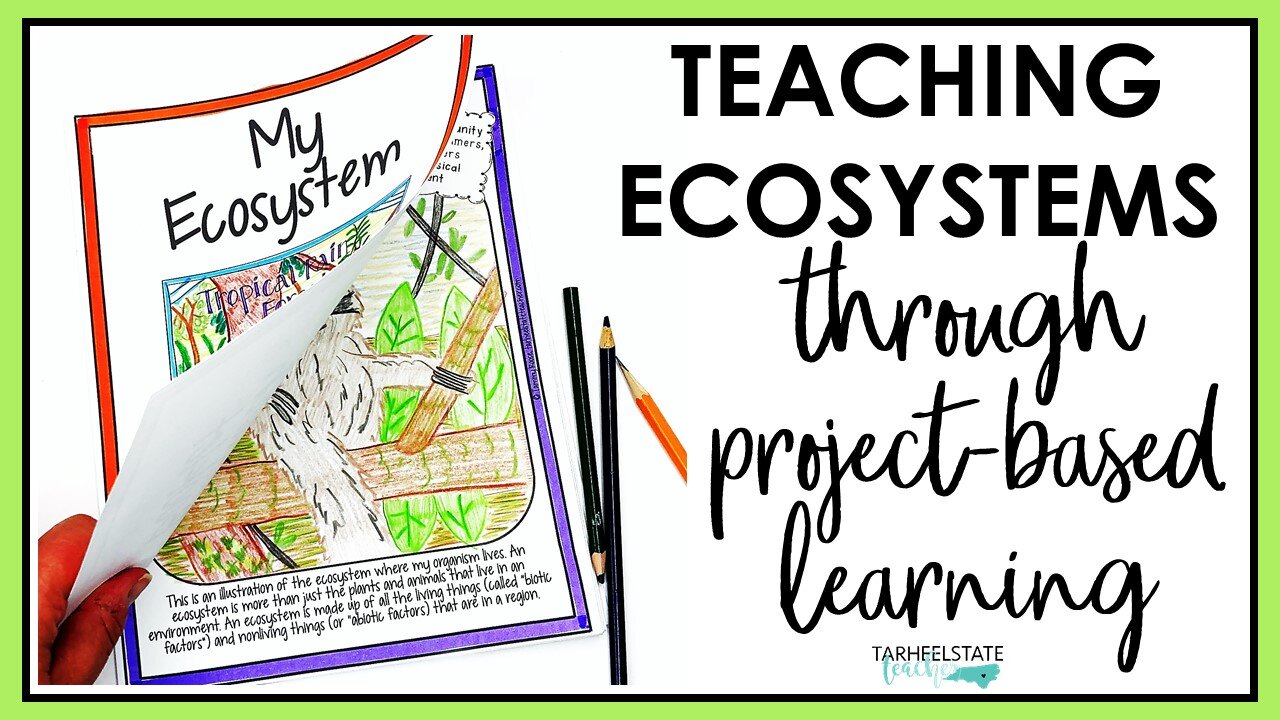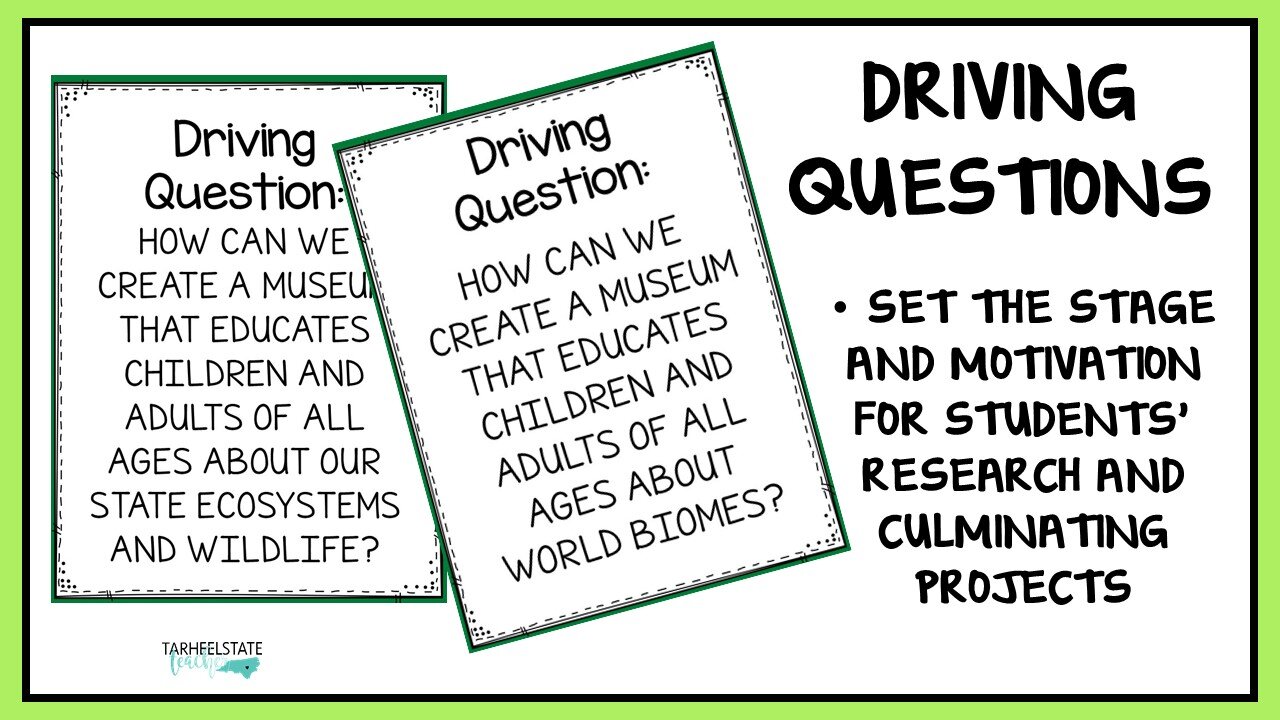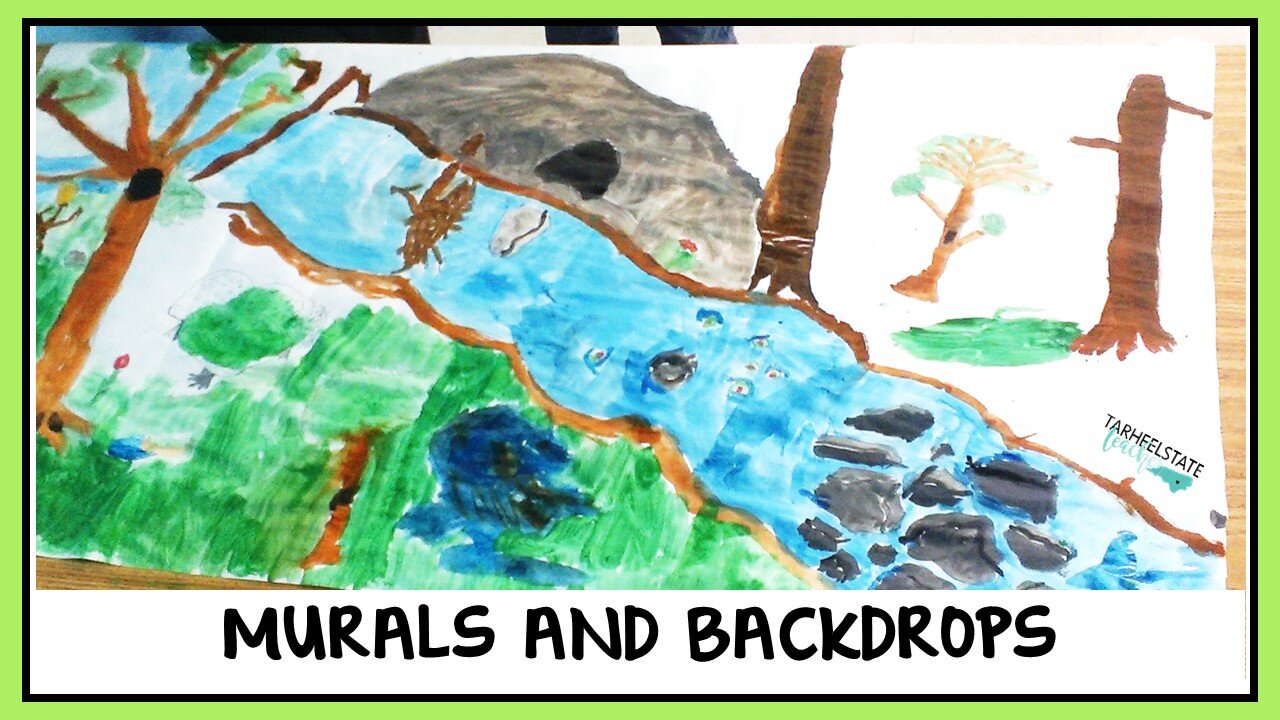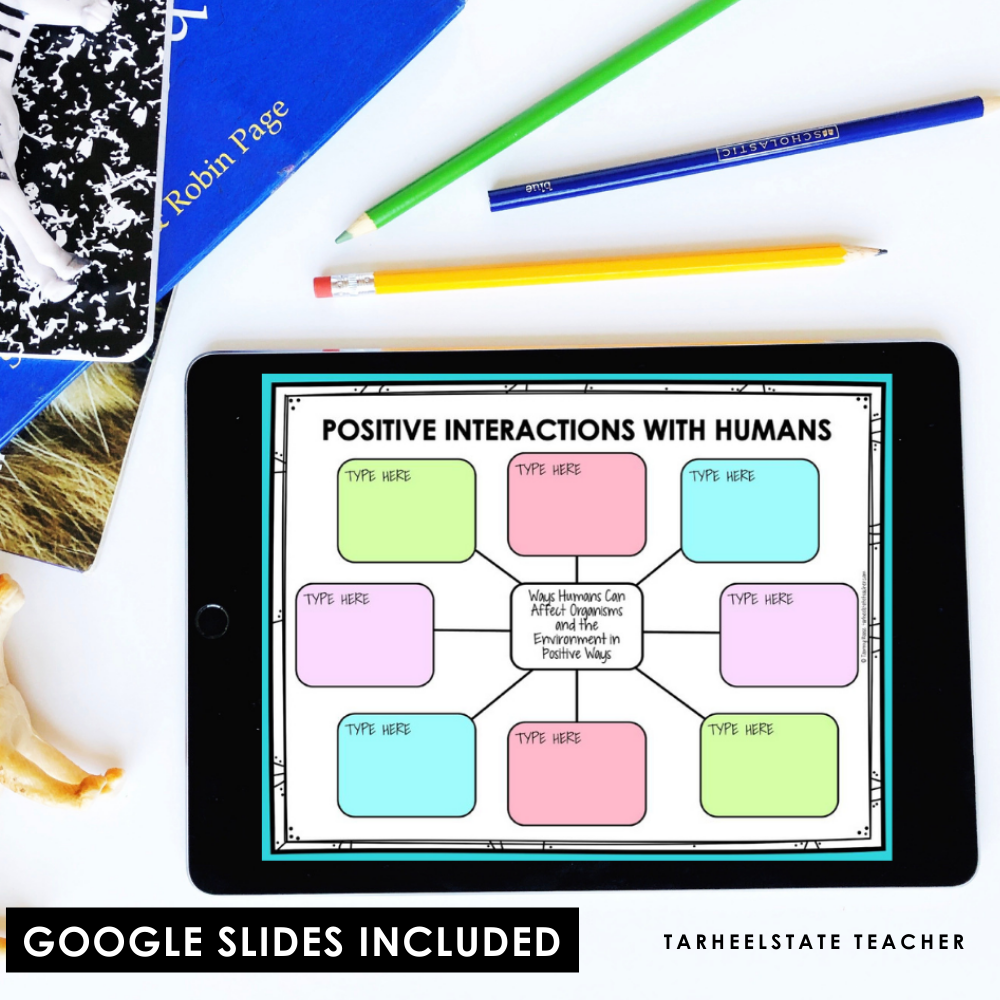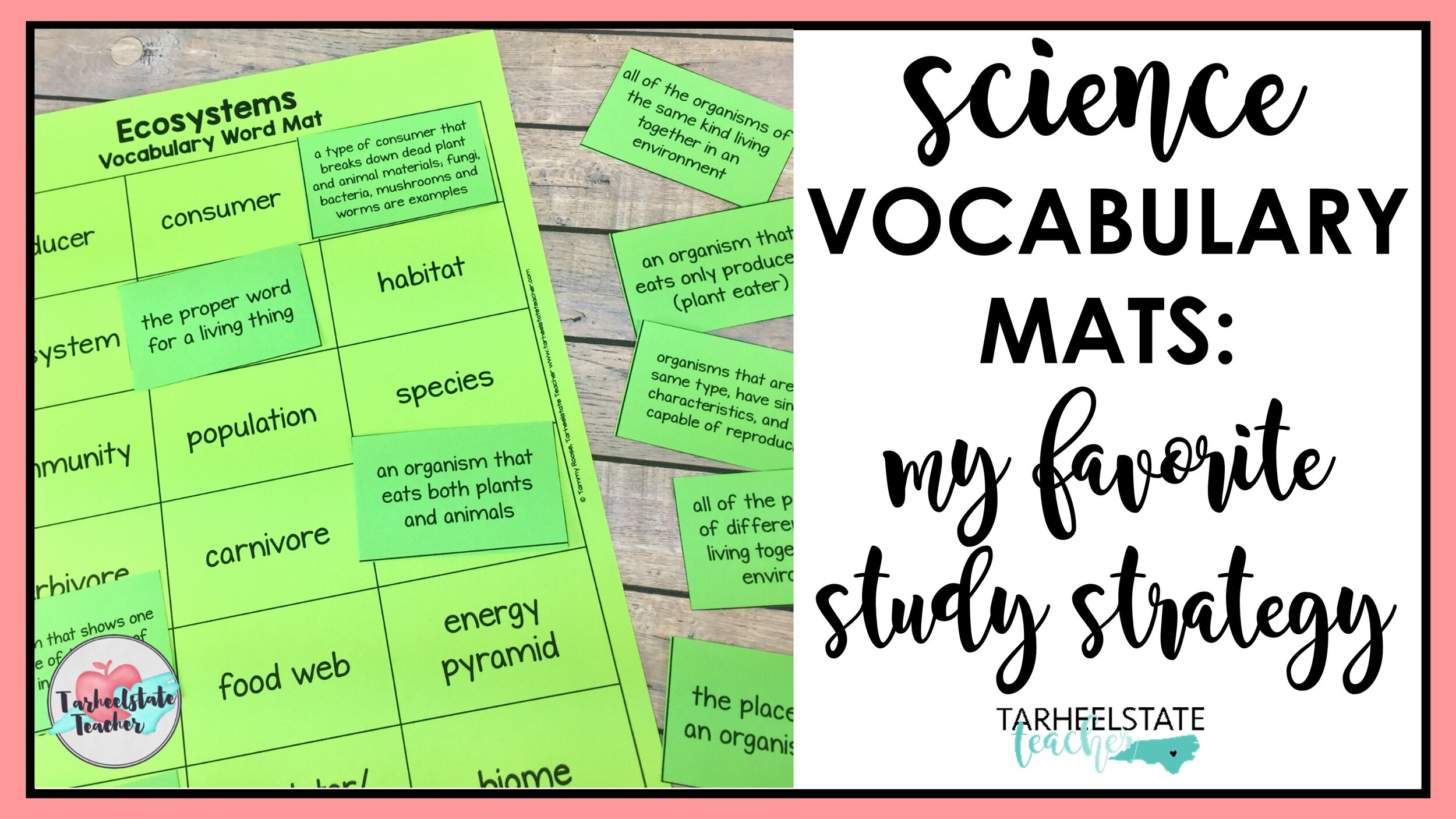Ecosystems Project Based Learning: Museum Project
If you are looking for an ecosystems or biomes project for your 4th grade or 5th grade students, look no further than this ecosystems project based learning unit that I implemented with my students! Wanting to take our study of organisms, biomes around the world, and ecosystems up a notch, I decided that this topic would be the perfect one for my first year of implementing PBL in my classroom. Ecosystems is my FAVORITE science unit to teach, so it didn’t take much for me to make the leap to incorporate the elements of PBL into our unit. Our project based learning unit for ecosystems incorporated science, nonfiction reading, research, writing, and the arts! Find out how I organized the research project, what our launch activity was, the driving question that motivated students’ work, and how we culminated our unit in a school-wide mobile museum!
Although I had previously taught many years of 5th grade science and had an in-depth understanding of those science standards, I was teaching 4th grade during the year that I first implemented this Ecosystems Project Based Learning Unit.
This created the perfect storm for making this project a true collaboration and success as I was able to collaborate with the 5th grade teachers. We also pulled in the art teacher to help with many of the museum project components. I focused on organisms, adaptations, and ecosystems of North Carolina and she applied everything to world biomes to meet the 5th grade standards.
We were strongly encouraged to figure out ways to incorporate the arts into our project because our school was working to be recognized as a STEAM school. I decided to focus my PBL unit on Ecosystems and Organisms through an Ecosystems and Biomes Mobile Museum Project—
Project based learning? Check!
Art...Oh yeah baby!
If you are not familiar with project-based learning, the Buck Institute is a great place to start poking around. I dare say, this project was really fun and meaningful AND allowed me to incorporate lots of Language Arts and technology goals into a science-based unit.
THE ECOSYSTEMS PROJECT LAUNCH: ENTRY EVENTS
To launch our project, we planned a field trip to our state Natural Sciences museum. Before our visit to the museum, students received a "letter" from the museum challenging them to create a mobile museum that would help the museum educate more children about ecosystems and organisms of North Carolina. The letter started with
“You have been hired by the Museum of Natural Sciences to help create a mobile museum exhibit. A mobile museum exhibit is one that can be moved around from place to place. We believe that mobile museums are important for helping us educate more students beyond the walls of the museum."
DRIVING QUESTION FOR ECOSYSTEMS PROJECT:
True project-based learning should start with a driving question. A driving question is supposed to compel students to want to seek out answers, tune them into what details they should pay attention to and what information needs to be gathered, and compel them to create something, develop a solution, and/or act in some way.
Our driving question directed students’ study and was the foundation for differentiating the Ecosystems project for 4th and 5th graders. Our driving questions were:
4TH GRADE: "How can we create a museum that educates children and adults of all ages about our state ecosystems and wildlife?"
5TH GRADE: “How can we create a museum that educates children and adults of all ages about world biomes?“
THE ECOSYSTEMS PROJECT ASSIGNMENT:
STEP 1: Choosing an Organisms
4th grade students chose an organism from one of the three regions of North Carolina— the mountain region, Piedmont, or coastal plain. 5th grade students focused on organisms from specific world biomes.
STEP 2: Research the Animal/Organism in Depth
Students completed pages appropriate for their grade level’s standards from these ecosystems research graphic organizers to learn about their organism in-depth. The Ecosystems and Biomes research booklet includes 23+ research pages on the following concepts:
- Habitats, Ecosystems, Biomes, and Abiotic and Biotic factors
✔ To develop an in-depth understanding of a specific organism, students research the organism's:
- Niche (carnivore, omnivore, herbivore)
- Adaptations (physical and behavioral)
- Food chains and food webs specific to the organism's environment
- Interactions with other organisms (symbiosis-parasitism, commensalism, mutualism)
✔ Extension Pages for the following topics:
- Comparing and contrasting two organisms (giving students the opportunity to share their research with a peer and receive feedback!)
- Human Impact (positive and negative effects)
- Changes affecting the organism and it's habitat over time
The graphic organizers and journal pages provided a focus for students’ research and the 5th grade teacher and I each chose the research sheets that matched our standards as we laid out the sequence of our units. We printed and stapled these pages to create research booklets for our students.
If you are looking for some great student-friendly websites for students to do their ecosystems and biomes research, I highly recommend these!
The graphic organizers were designed to heavily rely on students’ taking notes AND illustrating concepts as they completed their research. For example, when learning about an organism’s physical adaptations, students drew a picture of the organism and labeled the adaptations. On another sheet, students explained the organisms behavioral adaptations and how it helped them survive. When students researched an organism’s habitat, the sheets instructed them to draw possible habitat settings for the organism.
In order to support students in learning the vocabulary of the Ecosystems unit, many of the research sheets contain key vocabulary and definitions right on the page! These sheets were strategically designed to lay some groundwork for later in the unit when students write an informational article about their organism, design their mobile museums, and create 3D organisms. Through this research, students were able to gain an in-depth understanding of their chosen organism AND hit so many of our ecosystems standards.
STEP 3: WRITING RESEARCH PAPERS/INFORMATIONAL ARTICLES AND GOOGLE SLIDE PRESENTATIONS
After researching their organism, students wrote research papers AND turned those papers into Google slide shows (or other presentations) to be shown as interactive learning stations during the mobile museum. I also had plans for us to pull sentences and paragraphs from students’ articles to create informational posters for our mobile museum displays, but we didn't get the time to include this in our exhibit. {Can you say, "SNOW DAYS"?!?}
If you want students to complete their research and take notes about their organism, ecosystem, and biome entirely on the computer, Google Slides of the research templates have also been included in the Ecosystems Research resource.
STEP 4: THE REVISION/FEEDBACK PROCESS: COMPARING ORGANISMS WITH A PARTNER
After students completed their slideshows, I had them pair up with another student who studied a similar organism and they completed the Venn diagram from my Ecosystems research booklet materials. I thought this was a great way for students to experience one another's projects, but then I also realized it was a great way for them to get feedback and was a motivator for revision.
So, after doing the comparison activity, I copied the niche, behavioral adaptations, and physical adaptations sheets and paired students again. This time, students had to try to fill in the niche and adaptations sheets using only the information their partner provided in the slideshow. (I call this "backwards mapping" as students were kind of trying to work backwards from the slideshow to the research template.) This activity created a lot of motivation to revise their projects and to include missing information.
Constructive feedback for 21 kids given by other classmates instead of all on me?!? PERFECTO!
PUTTING IT ALL TOGETHER TO CREATE A MOBILE MUSEUM!
Simultaneously with our in-class research, students created a 3-D model of their organism with either clay or by felting in art class.
After getting a good grip on our research and slideshows, I divided students into groups based on their specific ecosystem (Mountains/Forest in Mountains, by the Riverside, in a Forest by the coast, etc) and they worked together to design ecosystem murals to serve as backdrops for our Mobile Museum Exhibits.
Mural design and painting happened mostly in my classroom! I’m not an artist or an art teacher! I was so scared to take on "real" art happening in my classroom, but now I'm so glad I did it. It was actually SO FUN to be a part of helping my students with this aspect of the Ecosystems project! I cut pieces of butcher paper fit to the size of tri-fold boards and students figured out how one group’s backdrop would flow into the next so that we had a “mountains to sea” display for all the regions of North Carolina.
When the mobile museum was ready, we opened in the cafeteria and invited family members and all other classes to attend. In case you can't tell by the pictures below, it was AH~mazing for a first shot at a PBL showcase!
As grade levels came to visit, my students partnered with one student and led them around the museum. (I made a little checklist/scavenger hunt of all the organisms in our museum so that visiting students would have a little something to engage them at the museum.) I spent the morning watching my students share their slideshows and what they had learned with students in other grades. It was so cool to see a culmination of all their hard work!
I do have some wishes for what I wish we had time to add to these projects:
I wanted students to have time to create a key of the organisms (instead of using the labels you see) where students create a simple illustration of the environment and use numbers and a key to identify each organism. (This is how it's done at our local museum's exhibits)
I wanted students to add foreground environmental elements. (You see those bare tables? I would have loved for students to have had time to add sticks, leaves, grass, moss, etc. to the displays.)
The DECOMPOSERS in the ecosystem are missing! (Whoops!!! Something else that needed to be added to the foreground)
Using information from students' slideshows and research to add displays and info boxes to the exhibit (like at a real museum—visitors have info to read as you move through the exhibits)
And lastly, I truly had the goal of having students create one hands-on learning tool in partners. This would have helped us better meet our "Driving Question" and would have required more critical thinking as students become teachers. The 5th graders were able to pull this off. Here's two examples of games that they created to add to their display:
TIMING OF THE PROJECT:
You might ask how much time this took. We began our projects in January and wrapped up at the beginning of March. We also had nearly two weeks of snow days in there. I would estimate that we spent 2 weeks on research, 2 weeks on typing drafts, one week on slideshow creation and mural creation (same week), and that the art teacher used 5 or so art classes to help students get their 3D organisms completed.
Keep in mind all of the standards I included with this one project—research and reading informational texts, writing informational texts, creating slideshows/utilizing technology, art, communicating and collaborating (to design a cohesive mural together), all of my ecosystems science goals, and a better understanding of the regions of North Carolina (social studies). I call this a WIN WIN! and my students looked forward to doing this project again in 5th grade for their world biomes unit!
I reflected on my project-based learning unit using this Project Design Rubric and a PBL Essential Elements Checklist, but I was very proud of what we accomplished—3D organism models that looked amazing, a collaborative mural backdrop that flowed from one environment to the next, a final research booklet, research paper, and a google slide show. I could hardly measure the time put into this project, but I dare say it was less than or equal to what it would have taken to teach research, nonfiction writing, slideshow design, and ecosystems separately.
READY TO JUMP IN WITH YOUR OWN ECOSYSTEMS PROJECT?
This project definitely created memories for my 4th and 5th graders and those lower-grades students who were able to attend! Grab all of the materials seen in this post, including printable and digital Google Slides of the entire research project—you won’t regret it!
HELPFUL ECOSYSTEMS AND PROJECT-BASED LEARNING RESOURCES
Ecosystems Project and Unit Materials (with step-by-step notes)
Detailed Post focused on how I used the Ecosystems Notebook Pages
The Buck Institute (What is Project Based Learning?)
Student Reflection Form from BIE

